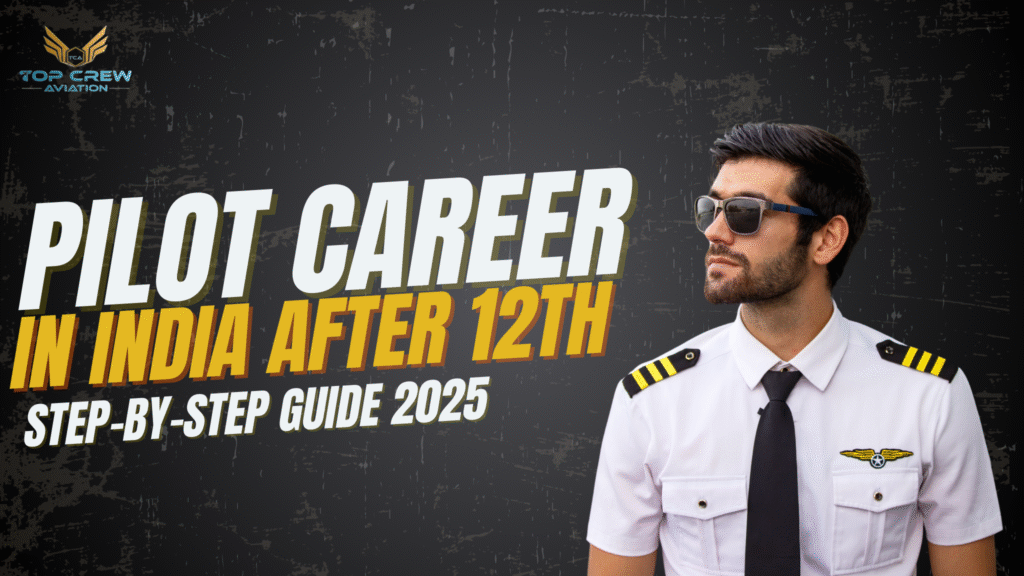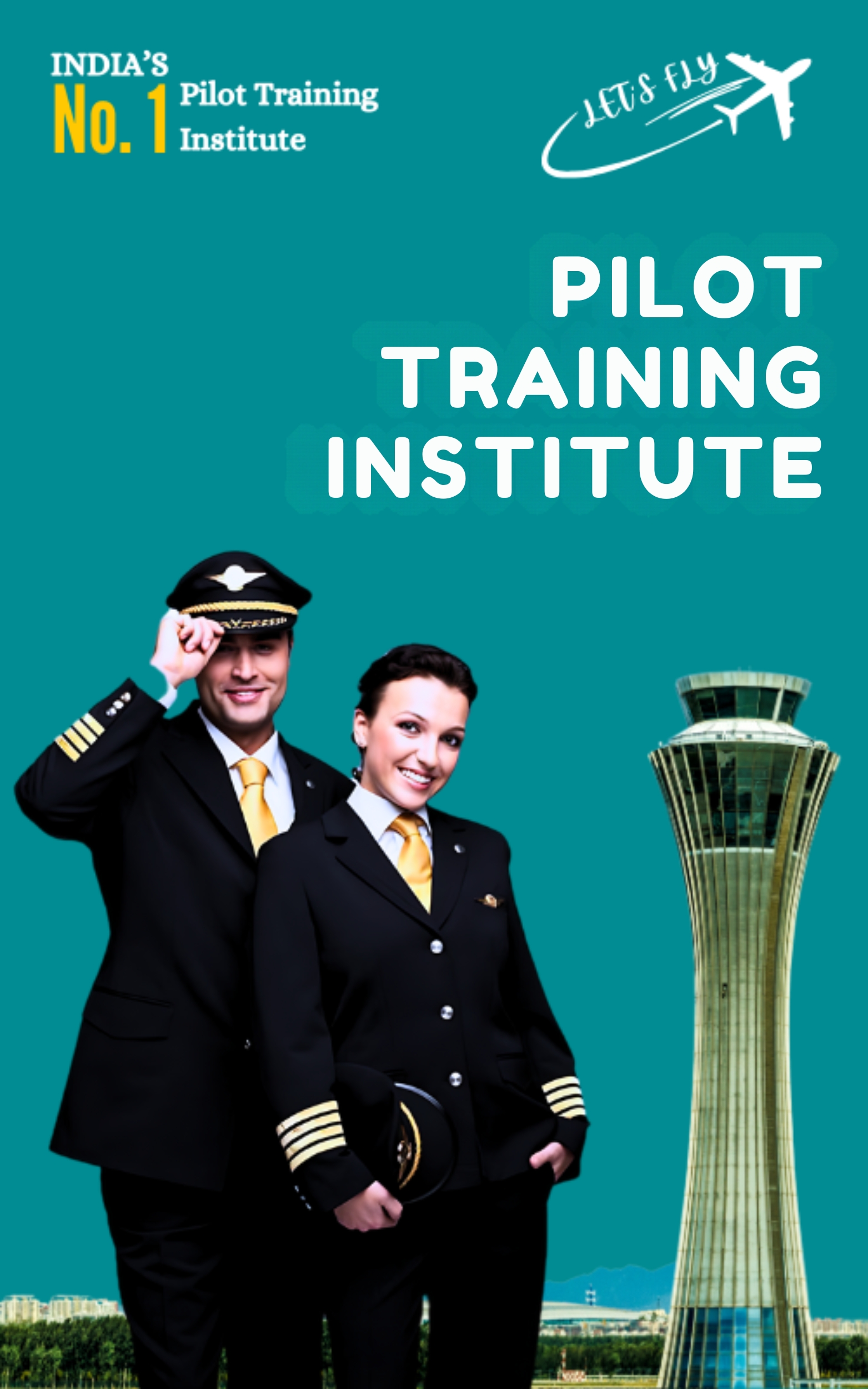Pilot Career in India After 12th | Step-by-Step Guide 2025
Captain Andy
September 3, 2025
One of the most distinguished, prestigious and rewarding career options in India is becoming a pilot. The aviation sector is expanding at a fast pace and pilots are in high demand with this rapidly growing industry.
Many students after completing 12th dream of becoming pilots and consider flying as a career. One can become a pilot by selecting one of the two ways either: Civil Aviation (Commercial Pilot Licence – CPL) and Indian Air Force (IAF). Here’s a complete, step-by-step roadmap for both.
Basic Eligibility
- Age: Minimum 17 years.
- Education: 10+2 with Physics and Mathematics from a recognised board.
- Physics, Chemistry and Mathematics are required for this even if you are have not opted for PCM in 12th, you can appear for those exams separately through NOIS or other recognised boards.
- In 2025, DGCA has proposed to allow even non-science students, but this is not yet fully implemented—so for now, PCM is still the safer route.
- Medical: You must clear a DGCA-approved Class-2 Medical first, and later a Class-1 Medical before flying solo.
Step-by-Step Roadmap (Civil Aviation)
1-Step : Class-2 Medical & PMR Creation
Your journey starts with a Class-2 Medical from a DGCA-empanelled doctor. Once cleared, your Personal Medical Record (PMR) is created with DGCA.
2–Step : Computer Number & DGCA Theory Exams
- Register on the DGCA Pariksha Portal to get your Computer Number.
- Prepare and appear for DGCA theory papers:
- Air Regulations
- Air Navigation
- Aviation Meteorology
- Technical (General)
3-Step : Choose a Flying Training Organisation (FTO)
- Select from DGCA-approved FTOs across India.
- From 2025, DGCA has made it compulsory for schools to publish key details: number of aircraft, instructors, expected training duration, simulator hours, and ground classes. Compare carefully—this will save both time and money.
4-Step : Class-1 Medical
Before solo flights and CPL application, you must pass the Class-1 Medical at DGCA-approved centres (Delhi, Mumbai, Bangalore, Chennai, Hyderabad, etc.).
5-Step: Flying Training & Hour Requirements
You must complete at least 200 flying hours, which generally include:
- 100 hours as Pilot-in-Command (PIC)
- 20 hours cross-country flying (PIC)
- 5 hours night flying (PIC) with 10 take-offs and landings
- Instrument and multi-engine flying (if included in your package)
6-Step : English Language Proficiency (ELP)
ICAO Level 4 or above is mandatory. Test must be taken at DGCA-approved centres.
YOUR PILOT CAREER
starts with a first click

8-Step : Apply for CPL on eGCA
After completing the flying hours, DGCA exams, medicals, ELP, and RTR(A), you can apply for your Commercial Pilot Licence (CPL) on the eGCA portal.
Pilot Training Costs (2025–26 Estimates)
- Government Academies (e.g., IGRUA): ₹45–50 lakh
- Private FTOs: ₹40–55 lakh (depending on aircraft, weather, and availability)
- Cadet Programmes: ₹80 lakh–₹1.2 crore (includes training + type rating, linked to specific airlines.
Pilot Career Options after CPL
- Airline First Officer (after type rating on A320/B737 etc.)
- Charter Pilot (corporate/private operators)
- Flight Instructor (builds hours while earning)
- Cargo Operations
Alternative Path – Indian Air Force (NDA Route)
If you want to serve as a military pilot:
- Appear for UPSC NDA Exam after 12th (PCM mandatory).
- Clear SSB Interview, CPSS (pilot aptitude), and Class-1 medical.
- Train at NDA (Pune) and Air Force Academy (Hyderabad).
- After service, IAF pilots can convert their flying hours into civil licences.
Smart Tips for 2025–26 Aspirants
- Research FTOs properly: From Oct 2025, DGCA will publish rankings of FTOs—use these to make informed decisions.
- Start medicals early: A delay in Class-1 Medical can push your timeline.
- Plan finances: Apart from tuition, keep buffer for exams, visa (if going abroad), and type rating.
- Build discipline: Airlines look beyond hours—they value soft skills, CRM (Crew Resource Management), and professionalism.
Conclusion
With 3Ds i.e. Dedicated, Discipline and Determination along with planning and clarity it is possible to become a pilot in India. Becoming a Commercial pilot requires training and investment while NDA is completely funded by the government because it is highly competitive.
While India is emerging at the fastest pace in the Aviation sector as well, and projected to be the third largest in the world by 2030, this is the right time for the aspirants to start their journey as pilots.
Frequently Asked Questions
What are the eligibility requirements to become a pilot in India?
You must have passed 10+2 with Physics and Mathematics, be at least 17 years old, and clear DGCA Class-2 and Class-1 medical exams.
Can I become a pilot without Physics and Mathematics in 12th?
Currently, Physics and Mathematics are mandatory. If you don’t have PCM, you can appear for these subjects through NIOS or another recognized board. DGCA has proposed allowing non-science students, but the rule is not yet fully active in 2025.
How many flying hours are required for a CPL in India?
To apply for a Commercial Pilot Licence (CPL), you must log at least 200 flying hours (including cross-country, night flying, and instrument training) at a DGCA-approved FTO.
What is the cost of pilot training in India after 12th?
Training costs ₹40–55 lakh in most DGCA-approved flying schools. Cadet programmes with airline tie-ups can cost ₹80 lakh–₹1.2 crore, including type rating.
How long does it take to become a pilot in India?
On average, it takes 18–24 months to complete CPL training if the school has adequate aircraft and instructors. Delays may occur due to weather, aircraft availability, or medical scheduling.
Which exams do I need to pass for a CPL in India?
You must clear DGCA theory exams in Air Regulations, Air Navigation, Aviation Meteorology, and Technical (General), along with English Language Proficiency (ELP) and RTR(A).
What is RTR(A) and why is it important?
RTR(A) stands for Radio Telephony Restricted (Aeronautical), conducted by the Wireless Planning & Coordination (WPC) wing of DoT. Passing it is essential to get your Flight Radio Telephony Operator’s Licence (FRTOL), which allows you to use aircraft radios.
8.
9.
What are the medical requirements to become a pilot?
Class-2 Medical: First step to create your Personal Medical Record (PMR).
Class-1 Medical: Mandatory before flying solo or applying for CPL.
Both test eyesight, hearing, physical fitness, and psychological fitness.
Can I become a pilot through the Indian Air Force?
Yes. You can join the NDA (National Defence Academy) after 12th with PCM. After clearing UPSC exam, SSB interview, CPSS (aptitude test), and medicals, you undergo training at NDA + Air Force Academy.
Do Indian airlines hire fresh CPL holders?
Yes, but usually after completing a Type Rating on aircraft like Airbus A320 or Boeing 737. Many airlines prefer candidates from cadet programmes, while others recruit through open vacancies.



